GM Announces 100 Percent Renewable Power Goal
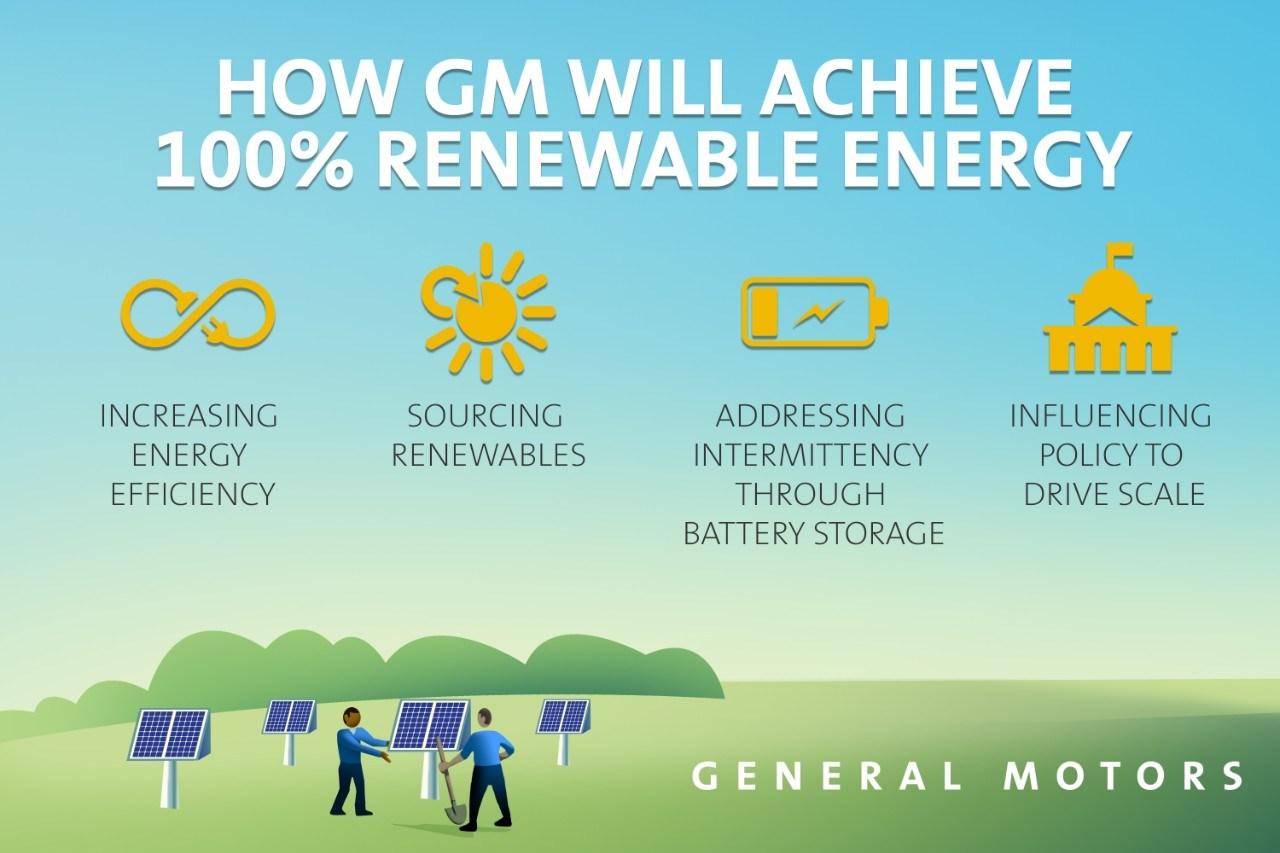

Editor's note: General Motors (GM)’s Director of Sustainability, David Tulauskas, GM’s Manager of Renewable Energy, Rob Threlkeld, WWF’s Director of U.S. Climate and Renewable Energy Policy, Marty Spitzer, and The Climate Group and TriplePundit came together at #GM100 on Wednesday, Sept. 21st to discuss GM’s these renewable energy goals! Read the TWITTER CHAT RECAP here!
The headlines buzzed last week when General Motors announced a new goal to obtain 100 percent of the energy required for its operations from renewable sources by 2050. This supersedes the company's previous goal of 125 megawatts by 2020, which GM says it will surpass before the end of this year.
By establishing this goal, the company joins the elite ranks of the RE100 -- a collaborative, global initiative of influential businesses committed to 100 percent renewable electricity. It now numbers 70 companies, including Ikea, Autodesk, Bloomberg, BMW, Coca-Cola, Google, HP and many more.
In a press release, GM says it will “generate or source all electrical power for its 350 operations in 59 countries with 100 percent renewable energy — such as wind, sun and landfill gas — by 2050.”
“This pursuit of renewable energy benefits our customers and communities through cleaner air while strengthening our business through lower and more stable energy costs," CEO Mary Barra said of the move. The company previously signed the American Business Act on Climate Pledge in advance of COP21.
According to Chief Sustainability Officer David Tulauskus, GM saves approximately $5 million annually through the use of renewable power. All totaled, the company saved a total of $80 million through its renewable purchases. This comes from the combination of 22 facilities with solar arrays, three sites using landfill gas, and four that will soon have wind power installations.
Last year, GM used 9 terawatt hours to power its factories, offices and other facilities. At the same time, GM reduced the energy intensity of its facilities by 14.5 percent since 2010. While efforts to improve energy efficiency will continue, with more than 300 facilities still to be converted, the company's renewable power consumption can be expected to grow considerably. This summer, the company installed a solar array at its Rochester Operations Plant, among others.
The next steps in the company’s renewable journey include 10 megawatts of rooftop solar at the Jinqiao Cadillac assembly plant in Shanghai and 20 MW of solar carports covering 8,100 parking spaces at its Wuhan vehicle distribution center. These are in addition to two new wind projects scheduled to come online later this year to help power four manufacturing operations.
“We hope that through this leadership, other heavy manufacturing companies will be inspired to make the switch too," Amy Davidsen, U.S. executive director of the Climate Group, said of the latest development. "Business needs to remain active and engaged as we transition to a clean economy, a critical factor to help keep global warming well under two degrees and ensure a prosperous future for us all.”
GM will also implement energy storage, using Chevy Volt batteries to even out power fluctuations at its Milford Data Center in Michigan. This simulates what many expect to take place in a vehicle-to-grid (V2G) scenario, where employees could plug in their electric vehicles during work hours to provide additional storage to the grid, while ensuring the cars retain sufficient charge for their ride home.
Image courtesy of General Motors
Unilever Is Buying Up All the ‘Natural’ Consumer Products Companies


Yesterday, Unilever, the consumer packaged goods (CPG) giant, announced it will acquire Vermont-based Seventh Generation for an undisclosed sum. Seventh Generation, which has long been seen as a success for its development of more responsibly-made consumer products, as well as operating internally as a sustainable company, enjoyed rapid growth over the past decade and generates about $200 million in sales annually.
Fortune reports the deal could cost Unilever up to $700 million, adding to the multinational's summer spending binge. Unilever paid $1 billion earlier this summer to acquire the Dollar Shave Club. The courier of razors tickled consumers with its low prices, and to some observers is a more sustainable option than being beholden to the likes of Gillette and Schick. And last month, Unilever acquired Blueair, the Swedish manufacturer of air purification systems.
Then add the rumors of Unilever’s talks to purchase Honest Co. At one time, Jessica Alba’s company was the darling of both parents and those without kids, for the company’s commitment to using natural products – only to see a flurry of litigation over accusations that those ingredients were not as natural, or effective, as the company claimed. But most likely this is a temporary setback, and Honest has plenty of time to regain that trust. As of press time, Unilever is insisting on a price far lower than the company’s reported $1.7 billion valuation. But nevertheless, Honest will cost the Dutch-Anglo CPG behemoth a handsome sum.
So, what’s going on? Why is the company behind Axe, Dove, Lipton and Magnum on a buying spree of all these cutting-edge, responsible and eco-friendly companies? Are we going to see something similar to Coca-Cola buying Honest Tea, or PepsiCo scooping up Naked Juice? The evidence suggests those brands are still churning out products the way they were before they were acquired by those beverage giants despite initial fears by those brand’s fans. Nevertheless, consumers who are attached to Seventh Generation and Honest Co. will still be concerned.
But perhaps they shouldn’t be in the case of Unilever.
When Unilever announced the purchase of the beloved ice cream company Ben & Jerry’s at the turn of this century, consumers, activists and environmentalists were alarmed. But the company still operated as it always had since the 1970s, and it even became a certified B Corp in 2012. Seventh Generation, also a B Corp, has proven that a company can have a conscience and be profitable. And Unilever’s executives are smart enough to know that if a brand is doing well, let it be.
Or, Unilever could help these brands perform even better, thanks to its extensive global distribution system. Seventh Generation, which can be found at Target, and Honest, with some products at Costco, have already proven they can sell just about anywhere. But Unilever could open even more doors and opportunities for these brands, including in its lucrative overseas markets. Some research suggests more consumers in emerging economies are open to more sustainable personal care and home cleaning products, even if they have to pay more – and Seventh Generation and Honest products are already competitively priced. Adding Unilever’s heft and scale could help these brands thrive in the long run.
In addition, Unilever is proactive when it comes to transforming its global operations to become far more responsible. It has not been perfect, but the company’s progress behooved its competitors to scramble and play catch-up. Since Unilever announced its Sustainable Living Plan almost a decade ago, its stock price for the most part has been on an upward trajectory – also boosting the business case of why more firms should be more responsible and responsive to all stakeholders, not just shareholders.
Finally, access to the suppliers that have contributed to Honest’s and Seventh Generation’s success could even see more of these materials transferred to Unilever’s other brands. In a world where consumers want to see less synthetic and petroleum-based ingredients in their products, these new arrangements could be a win-win for everyone involved.
To many of us, becoming big has long been equated with bad. But in the case of Unilever’s shopping spree, big could actually mean better.
Image credit: Seventh Generation
Dakota Access Pipeline Halted as Court Reviews Emergency Appeal -- But Protests Continue


Native American tribes trying to stop the construction of the Dakota Access Pipeline received some good news last Friday. A U.S. Appeals Court in Washington, D.C. ordered Energy Transfer Partners to halt construction on the pipeline, located 20 miles east and west of the Missouri River at Lake Oahe, while the court reviews the Standing Rock Sioux tribe's emergency appeal of the project.
The injunction comes after more than a year of protests and appeals by the Standing Rock Sioux Tribe, whose reservation sits about a mile away from the intended route of the pipeline in North Dakota. The pipeline is projected to cross under the Missouri River at Lake Oahe, and the tribe says it would put their water at risk. Tribal leaders also argue that the pipeline's route doesn't take into account cultural artifacts and ancient burial sites that are located in its path.
Temporary injunction
Standing Rock Sioux Chairman David Archambault III reminded supporters, however, that the stay is only meant to give the court time to consider the tribe's emergency appeal against the pipeline's route.
"This is a temporary administrative injunction and is meant to maintain status quo while the court decides what to do with the Tribe's motion," he said in a statement. "The Tribe appreciates this brief reprieve from pipeline construction and will continue to oppose this project, which will severely jeopardize its water and cultural resources." He added that the tribe is still committed to ensuring the safety of its resources. "We will not rest until our lands, people, waters, and sacred sites are permanently protected from this destructive pipeline."
The 2-1 vote in favor of halting the pipeline came only days after a similar decision by the Departments of Justice, Interior Affairs and Army to delay any further work in disputed areas until the Army "can determine whether it will need to reconsider any of its previous decisions regarding the Lake Oahe site." At the heart of the dispute is whether the approved path of the pipeline conforms with the National Environmental Policy Act (NEPA). The tribe also feels some of the construction would destroy sites that would normally be safeguarded under the National Historic Preservation Act, such as those the Sioux maintain were destroyed by bulldozers over the Labor Day weekend.
Standing Rock Sioux: More than 10,000 protesters
Clashes between Native American protesters and supporters, and the company's security guards over the Labor Day weekend, inflamed tension on both sides. But it has also increased popular support for the tribe's effort to stop the pipeline.
More than 10,000 protesters and supporters are now encamped at the protest site outside the Standing Rock Sioux reservation, including many non-natives who traveled from cities across the continent to show their solidarity with the tribe.
Iowa claims eminent domain for pipeline
Meanwhile in Iowa, residents are suing to stop their land from being seized under eminent domain. In June, the Iowa Utilities Commission granted eminent domain status to the pipeline project, which gives Dakota Access, an Energy Partners subsidiary, the power to seize private land for "public good."
Fifteen ranchers affected by the decision plan to debunk that statement in court. The group believes they can prove that the land grab isn't in the public good, and at least one nonprofit is backing their argument. Bold Iowa's Director Ed Fallon is using the potential worsening of the climate as evidence that Americans won't be better off if the pipeline is allowed to go through.The group has been appealing to local residents through its website, while reminding potential enlistees that protesters should "participate only in the most dignified manner. After all, we are the conservatives, standing up for a safe and secure future for our families."
So far, there appear to be many who agree with the group's sentiment. Credo Action, Iowa Citizens for Community Improvement and 100 Grannies for a Livable Future have signed on to the pledge.
On Saturday, more than 140 protesters turned out in Sandusky, Iowa, to demonstrate against the pipeline. At least 40 were arrested for trespassing onto the utility easement, including five juveniles. The sheriff's office was informed ahead of time that it would be a passive protest, and that demonstrators would be volunteering for arrest.
Pipeline company: Legal right-of-way has been obtained
Energy Transfer Partners released a statement disputing claims by Native American groups that their objections have not been given adequate consideration.
"Nearly the entire Dakota Access pipeline route is across private land," the company's Chairman and CEO Kelcy Warren said in defense of the project. He pointed out the land abutting Lake Oahe that is under dispute isn't owned or controlled by the tribe.
"Despite this, we worked to meet with the Standing Rock Sioux Tribe leaders on multiple occasions in the past two years," Warren said in a statement published by the North Dakota TV station, Valley News Live. He pointed out that despite the controversy, "the right of way for the entire pipeline has been obtained" and that all four states that the pipeline is due to cross -- North Dakota, South Dakota, Iowa and Illinois," have issued "favorable certificates, permits and approvals for construction."
But as the Standing Rock Sioux pointed out, ownership and control of land aren't always the defining issue when it comes to the preservation of ancient cultural sites. The same can be said for water sources that are considered the life blood of its community's way of life.
"The bottom line for the Standing Rock Sioux Tribe is and will always be protecting our lands, people, water, and sacred sites from the devastation of this pipeline. Our fight isn’t over until there is permanent protection of our people and resources from the pipeline," the tribe stated.
Image credits: 1) Flickr/Fibonacci Blue; 2) Flickr/Fibonacci Blue
Lyft Co-Founder: Autonomous Cars Will Be the Future in 5 Years
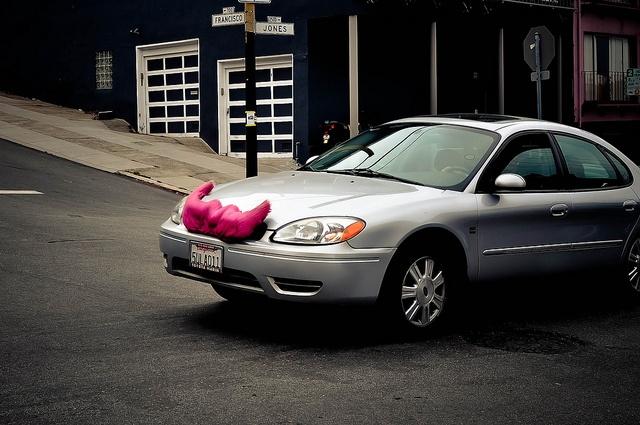

Autonomous cars will provide the majority of Lyft's rides in five years, co-founder John Zimmer wrote on Medium over the weekend.
A technology once seen as decades away is approaching faster than most of us believed possible just a year or two ago. Automakers are in a mad scramble as they seek to establish primacy in this still unknown and untapped market. But Zimmer sees Lyft paving the way to that future, with his company owning the cars that move commuters from home to work, or to a restaurant, coffee house or bar.
Such a vision would make the drivers who work for ridesharing companies nervous as they rely on these services, for better or for worse, to score additional income. Zimmer, however, insists autonomous cars, as part of a company-operated fleet and not owned by individual drivers, will be the reality for three main reasons.
A company-owned fleet is more efficient
Writing as if he came straight from a business school seminar, Zimmer touted the efficiency of a company- or network-owned fleet rather than depending on a system linking individually-owned cars.
As with the demise of Relay Rides (now Turo), consumers in general are loath to rent out their cars to strangers (they’d rather drive themselves). Passengers also want a clean car and reliable drive, which are assumed in this age of Yelp-inspired rating systems.
The end of private car ownership
Zimmer predicted that car ownership in cities will practically end by 2025. Much of that is due to demographics, as younger consumers are obtaining driver's licenses at a rapidly declining rate. Owning a car, once seen as a ticket to freedom and adulthood, has become viewed as more of a financial drain.
After all, the purchase of a home, equities and even clothing (if taken care of and sold to a consignment shop), at a minimum, can result in some return in value. But that is not the case with a car, which some view as a money pit. Add the fact that citizens are returning to the cities, and fewer consumers wish to deal with the hassle of car ownership.
The built environment will change
This where Zimmer throws off his CEO specs and puts on his utopian, rose-colored glasses. He sees cities with fewer parking spaces, fewer parking lots and, of course, fewer cars sitting empty on the streets. Zimmer believes our future could be in cities where, as was the case during the late 19th and early 20th centuries, there were far more people on the streets than vehicles.
As cars moved from the first assembly lines of Henry Ford, to the post-war interstate freeway system, people increasingly abandoned public transportation. Zimmer delivered a narrative of how the rise of cars is tied to everything from the decline of small businesses to a rise in crime to even the loss of community. True, we see a reversal of this long trend in more cities such as New York, where underpasses, parking lots and even parking spaces are torn up and turned into everything from sidewalk cafes to micro-parks.
So, what does the future hold?
The big challenge is whether consumers will buy in. Yes, the evidence suggests autonomous cars can be safer than those driven by humans—but it is important to note that it will be decades before all humans are eliminated from the roads. Yet no one considers the impact this shift will have on people. The loss of a Lyft income may not be felt on Wall Street, but it has an effect within many households. Furthermore, on paper it sounds great to have a seamless system in which a car shows up at a moment’s notice, and without the hassle of insurance, gasoline and maintenance.
But this renewed spirit of community we are promised will probably not be the reality, as we already live in a world glued to our smartphones. We will continue to have this same lifestyle a decade from now, as we arrive in these revived neighborhoods every evening from work, only to leave again by autonomous car to meet a friend across town . . . with whom we’ve been texting all day.
If we do start relying on these companies for our transportation future, expect it to be the way it is now with cable TV, cell phone service and airlines based on these companies’ track records: limited choice, poor customer service, nickel-and-diming and frustrated consumers. Ridesharing companies have a lot of work to do and trust to build before they sell us on a future that sounds fantastic now, but could be infuriating later.
Image credit: Spiros Vathis
How the Sugar Industry Deceived the American People
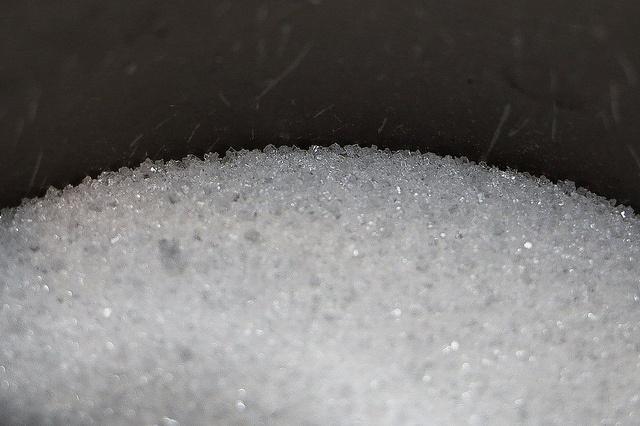

When I was growing up, fat was labeled the big bad guy. Whole milk and real butter were considered unhealthy. If you used margarine and non-fat milk, others perceived you as health-conscious. But it turns out fat isn’t as bad for us as we thought. Sugar, the substance loaded into so many of our processed foods and soft drinks, is far worse for us. For too long, we just didn’t realize.
Blame our ignorance on the sugar industry. There were early warning signs of the link between coronary heart disease and sugar consumption. Last week, Dr. Kristin Kearns published a study that casts light on the dark side of the sugar industry. Kearns looked at Sugar Research Foundation documents, statements and historical records. What she discovered is that the industry ignored those warning signs.
Now called the Sugar Association, the SRF “sponsored a research program in the 1960s and 1970s that successfully cast doubt about the hazards of sucrose while promoting fat as the dietary culprit in [coronary heart disease (CHD)],” Kearns determined.
SRF began sponsoring research on CHD in 1965 with a literature review published in the New England Journal of Medicine which cast fat and cholesterol as the dietary causes. It also downplayed evidence that consuming sugar was also a risk factor. “The SRF set the review’s objective, contributed articles for inclusion, and received drafts,” Kearns wrote in the study. The funding and role of the SRF was not disclosed.
Founded in 1943, the SRF became concerned in the 1962 that a low-fat diet with high sugar consumption could increase the level of serum cholesterol. John Hickson, the SRF’s vice president and director of research, reported to an organization subcommittee in 1964 that new research on CHD was a reason to be concerned. “From a number of laboratories of greater or lesser repute, there are flowing reports that sugar is a less desirable dietary source of calories than other carbohydrates,” he wrote. Hickson proposed that the SRF “embark on a major program” to counter “negative attitudes toward sugar.” Part of that program was funding CHD research.
Two famous Harvard nutritionists, Dr. Fredrick Stare and Mark Hegsted, worked closely with the SRF. Both are now deceased, but their work still has repercussions. Hegsted wrote a literature review at the behest of the SRF that countered research at the time linking sugar consumption to CHD. Hegsted and his colleague, Dr. Robert McGandy, were paid the equivalent of $48,000 in today’s value for their work. The source of their funding was not disclosed. Stare also published reviews casting doubt on the link between sugar and CHD. Both reviews were published in 1967 in the New England Journal of Medicine.
Current studies link a diet heavy in sugar with the risk of dying from heart disease. A 2014 study found a “significant relationship between added sugar consumption and increased risk for cardiovascular disease (CVD) mortality.” That same year, the World Health Organization (WHO) urged countries to decrease sugar consumption, and the organization’s guidelines recommend that adults and children reduce their daily intake of sugars to less than 10 percent of total energy intake. WHO also recommend that reducing to 5 percent of total energy intake, or about 25 grams (six teaspoons) a day, would have added health benefits. In other words, most Americans need to drastically reduce our sugar consumption.
The study by Kearns suggests that policy-making committees “should consider giving less weight to food industry–funded studies.” Marion Nestle, an expert on food policy, wrote in a commentary for JAMA that “industry-sponsored nutrition research ... almost invariably produces results that confirm the benefits or lack of harm of the sponsor’s products, even when independently sponsored research comes to opposite conclusions.”
The Sugar Association still doesn’t see industry-sponsored research as a problem. “It is not only unfortunate but a disservice that industry-funded research is branded as tainted,” the organization said in a statement. Instead, it sees industry-sponsored research as “informative in addressing key issues.”
Some companies reduce sugar content, while others tout the use of “cane sugar”
If you read labels avidly, and really you should, you will invariably see “cane sugar” listed as an ingredient in a lot of processed foods and soft drinks. While it might have slight health advantages, it’s still unhealthy. The good news is that some companies understand that reducing sugar in their products is necessary. One of those companies is Nestle, which reduced its added-sugar content by 4.1 percent by the end of 2015, toward its goal of a 10 percent reduction. Nestle has a joint venture with General Mills called Cereal Partners Worldwide to help reformulate recipes to meet its goal to reduce the sugar content in its breakfast cereals to nine grams per serving.General Mills managed to reduce the sugar levels in its cereals marketed to children by over 16 percent, on average. In 2009, the company pledged to reduce sugar in all cereals marketed to children under 12 to single-digit grams of sugar per serving. Currently, all General Mills Big G kid's cereals have 10 grams of sugar or less per serving. General Mills also reduced sugar in other cereals, and cut the sugar content in its yogurts marketed to children under 12 by over 21 percent since 2007.
Back in May, Dannon announced that it had exceeded its sugar reduction goal. Dannon set a target a few years ago to reduce the amount of sugar it uses to 23 grams or less per six-ounce serving for all products marketed to children and 70 percent of its overall products. Dannon achieved a 76 percent reduction for its overall products and a 93 percent reduction for children’s products.
Image credit: Flickr/Kevin Doncaster
Laboratory Meat Seeks a ‘Clean’ Branding Makeover


As the global middle class increases, the global consumption of meat also surges. The world’s largest consumers of meat will only eat more animal protein. Throughout the world, the United Nations’ Food and Agriculture Organization (FAO) estimates that global meat production needs to increase from the current 200 million tons annually to 470 million tons by 2050 to meet the needs of a growing population. Add the grisly statistic that the average American eats anywhere from 7,000 to 16,000 animals (if you include fish, mollusks and bivalves) in his or her lifetime, and one can image a bevy of concerns from animal welfare to human health and, of course, the meat industry’s environmental impact.
Now some Silicon Valley types say laboratory meat, often called cultured meat (or even in-vitro meat), can both reduce animal suffering and the amount of land and resources needed to produce meat. But this nascent industry faces two massive hurdles. First, there is scale, as seen in the much ballyhooed $330,000 Dutch petri-dish burger and the $18,000 lab-grown Memphis Meats meatballs. Those costs will rapidly fall, however, if there is a proven market and technology can become more efficient, as we have seen with computers, mobile phones and even organic produce.
But the larger challenge is getting consumers past the “yuck” factor, conjured by images of an army of Dr. Frankensteins in white laboratory coats injecting stem cells and who knows what else in the pursuit of tissue engineering perfection.
So, the Good Food Institute (GFI), which has been one of the largest proponents of this next-generation meat, has come up with a term that aims to score consumer acceptance: clean meat.
According to an article GFI posted last week, “clean meat” is a more accurate description of animal protein made without animal husbandry or animal slaughter. GFI makes the case that clean meat is analogous to clean energy – both terms impart the desired outcome of producing these resources, without the environmental or social impacts. Furthermore, “cultured” or “laboratory” meat is not an accurate description of how this meat is produced. After all, we do not refer to Ritz Crackers or Boca Burgers as “laboratory” food, though clearly those products were first tested in kitchens, or more succinctly, corporate laboratories. “Cultured” also does not quite work, as we are not talking about kimchee, pickles or yogurt.
GFI points out that when these meat products are mass-produced, they will be manufactured in giant fermenters within factories that will resemble a brewery more than a slaughterhouse. Of course, marketing these products as “fermented meats” is an obvious non-starter.
The argument GMI makes is logical, and the industry is wise to get on this now before decades, even centuries, of consumer bias settles in. The challenge, however, is that plant-based materials already have a huge advantage in the race to reduce meat consumption. Let’s start with condiments: Hampton Creek has egg-free mayo and other products that taste great and are competitively priced at retailers such as Target. Beyond Meat has long offered vegan chicken strips that arguably taste just as good, or even better, than the “real” thing and at a fair price. And Impossible Foods’ garish “Bloody Burger” has even landed on the menu in New York City’s Momofuku empire.
So GFI, along with clean meat companies such as substitute chicken hopeful SuperMeat, have a steep hill to climb. But if we as a society are going to accomplish this Herculean task of producing more for a growing world with less resources, then clean meat will have to be part of this pesky equation.
Image credit: KOMUNews/Flickr
250 core business changes, 2.5 million workers treated better— Ethical Trading Initiative


Black Lives Matter and Beyond: Corporate Leaders Respond
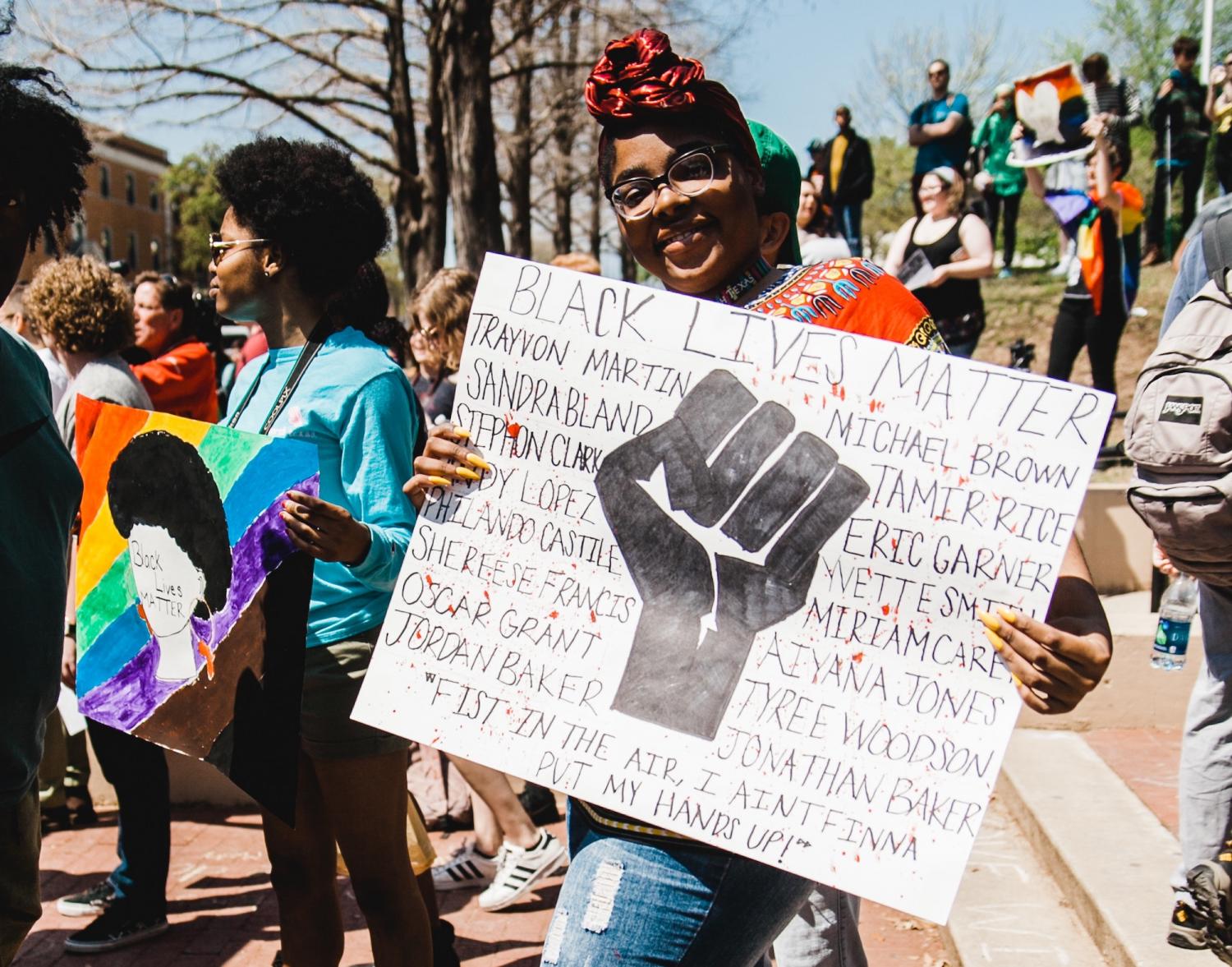
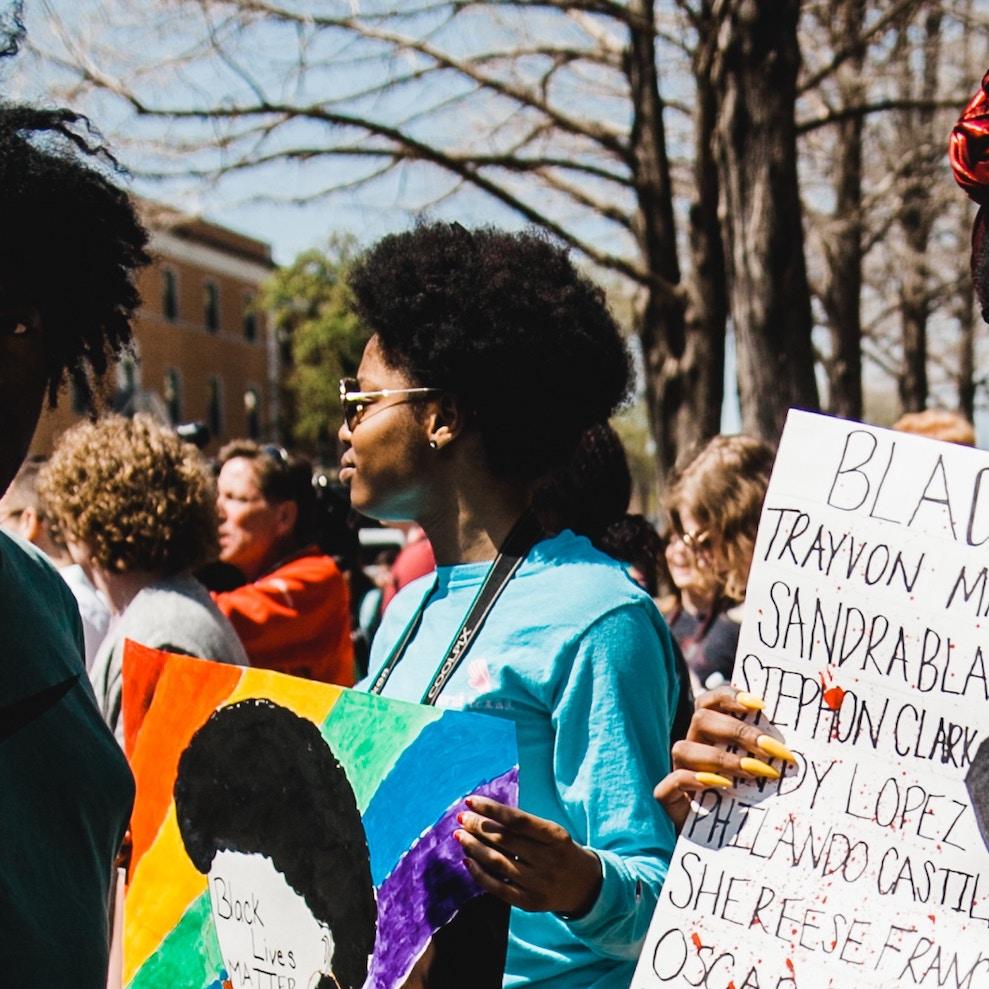
By Cecily Joseph and Jen Boynton
It would be an understatement to say the Black Lives Matter movement has left an indelible mark on America’s timeline. Social media has facilitated a society-wide awakening to existing racial inequality: Regular people throughout the country share videos – incontrovertible proof of racially-motivated police violence and the national lack of social justice it represents. The rise in documented deaths of black men and the Black Lives Matter movement provided a catalyst for a conversation we should have been having all along.
But for all too long, America’s employees of every color have left it at the door when they walk into work. Companies don’t know how to talk about this topic. Corporate social responsibility (CSR) departments don’t know how to address it, and don’t even know if they should. Employees come to work distracted by loss of life, inequality, fear and the unfairness of it all, and we don’t know how to support them, so we stay silent.
Additionally, in what should be a meritocracy, our nation’s businesses are in a unique position to right much of the systemic inequality through fairer hiring and equal pay for equal work. Yet well-intended diversity programs have had minimal impact.
Many of us have conversed about this topic since such events as the Charleston church massacre in June of 2015 when a white terrorist opened fire on 13 black members of a bible study group, one hour after they welcomed him to pray with them; or even further back to the acquittal of George Zimmerman for the killing of Trayvon Martin, an unarmed teenager in a hoodie.
We don’t claim to have all the answers.
But we know that business leaders – and sustainability leaders – have a responsibility to look for them. Through this series, we’ll highlight solutions that work and bring experts to the table to discuss solutions we’ve yet to try from activists, consultants and corporate insiders. We’ll look up-close at challenges people of color face in the workplace and why traditional diversity programs alone are not enough. And we’ll take a wide-angle lens to the problem – looking at economic and social issues we need to overcome in the fight for true equality.
If you feel a little uncomfortable, good. We do too. Our hope in convening this conversation is to show how social inequality is a material issue for corporate social responsibility practitioners, so that we can all work together to make things better. We hope to convene a conversation to help you tackle a national problem that is, frankly, impossible for any one person or organization to solve.
But we feel a moral compulsion to try anyway. We will kick off this series next week.
We invite you to join the conversation in the comments of the articles in this series, on Twitter at @CecilyJosephCR and @JenBoynton, using #BLMandBeyond, or via email at [email protected]. We look forward to your feedback.
Cecily Joseph, VP, Corporate Responsibility & Chief Diversity Officer, Symantec + Jen Boynton, Editor in Chief, TriplePundit
Image credit: Heather Mount/Unsplash
Experts Weigh In: Cost of Wind Energy to Keep Going Down, Down, Down


Here's more bad news for fossil fuels: The U.S. Department of Energy just released the results of a global survey of 163 wind energy experts. The verdict: The cost of wind energy will drop between 24 and 30 percent by 2030, from a 2014 baseline. In addition, a total reduction of 35 to 41 percent from the 2014 baseline is possible by 2050.
And that's just the cautious estimate. Costs could go much lower under the right circumstances.
A wind energy problem ... and a solution
The new survey is a collaboration spearheaded by the Energy Department's Lawrence Berkeley National Laboratory.
Its purpose is to help energy planners determine what role wind energy could play in the global mix, as we transition to a decarbonized economy.
To a large extent that depends on the cost of wind energy, but that is exactly the problem: conventional ways of predicting future costs do not apply to some industries, and the wind industry is one of them.
That's partly because wind technology is still developing rapidly. It does not have the kind of precedent that would enable analysts to make projections based on past performance.
The solution in cases like these is to call upon experts to participate in something called an "expert elicitation survey." As described by Berkeley Lab, a rich body of methodology has been developed to ensure that such surveys accurately reflect the current state of knowledge:
"Expert elicitation is a tool use d to develop estimates of unknown or uncertain quantities based on careful assessment of the knowledge and beliefs of experts about those quantities. It is often considered the best way to develop credible estimates when data are sparse or lacking, or when projections are sought for future conditions that are different from past conditions."
Expert elicitation is becoming more common in the energy field, though according to Berkeley Lab its application to the wind industry has been limited so far.
Yes, the cost of wind energy will go down
One caveat issued by Berkeley Lab is the possibility that respondents may have a bias toward expressing a more optimistic outlook than warranted. Researchers also caution that the experts surveyed expressed a wide range of views. The result is "substantial uncertainty" in the projections.
The lab seems to have accounted for the uncertainty by underscoring the "best guess" results in its press materials, meaning the median results. Here's the money quote from the Berkeley Lab press release:
"... Experts anticipate 24 to 30 percent reductions in the levelized cost of energy by 2030 and 35 to 41 percent reductions by 2050 across the three wind applications studied, relative to 2014 baseline values."
Berkeley Lab also notes that the survey indicates a potential for costs to be much lower than the median:
"Experts predict a 10 percent chance that reductions will be more than 40 percent by 2030 and more than 50 percent by 2050."
According to the experts, two main factors will continue to drive down the cost of wind. One factor has to do with the sharper learning curve that comes with rapid growth in the wind energy market. This factor may also include economies of scale and streamlining in the supply chain.
The other factor is "aggressive" research leading to improvements that lower costs. That can include, for example, the use of more durable and less expensive materials, as well as new technologies that improve wind turbine efficiency.
One interesting result of the survey is the prediction that a continued increase in the size of wind turbines will be a key factor in keeping costs on a downward trend.
The development of offshore wind energy will also play an important role.
You can get all the details on the survey and its methodology from the journal Nature under the title "Expert elicitation survey on future wind energy costs."
Two presidential candidates, two positions on wind energy
Given its prediction of significant future cost reductions, the new Berkeley Lab survey should help support public policies that favor the continued growth of the wind industry.
However, that will depend on who wins the Oval Office this fall.
Republican candidate Donald Trump, for example, is not a fan of renewable energy. In articulating his "America First" energy plan, he argues that there is no room for renewables in U.S. energy policy.
Wind energy has been a particular target for Trump on the campaign trail. He has gone on record multiple times hinting at a conspiracy to cover up the number of birds killed by encounters with wind turbines. Last month, the Associated Press reported this statement by Trump at a rally in Pennsylvania:
“The wind kills all your birds. All your birds, killed. You know, the environmentalists never talk about that,” Trump said.
Hillary Clinton, in contrast, is poised to deploy policymaking tools like the new Berkeley Lab survey to speed up decarbonization. Her "day one" energy plan includes goals for solar power, energy efficiency and alternative fuels.
Clinton has also gone on record calling for an end to oil subsidies. She is not a fan of the Keystone XL pipeline and offshore drilling.
She also favors a continuation of the federal production tax credit for wind energy. Her support for the tax credit -- which has been instrumental in growing the U.S. wind industry -- dates as far back as 2007:
"I will strongly support a renewable portfolio standard, with 25 percent of electricity coming from wind, solar, and other renewable sources by 2025 ... As president, to help us reach 25 percent by 2025, I will make the production tax credit for wind and solar permanent. No more guessing what you're going to get as you move forward with your production.”
Congressional Climate Science Witch Hunt Begins ‘Constitutional Obligation’ Hearings
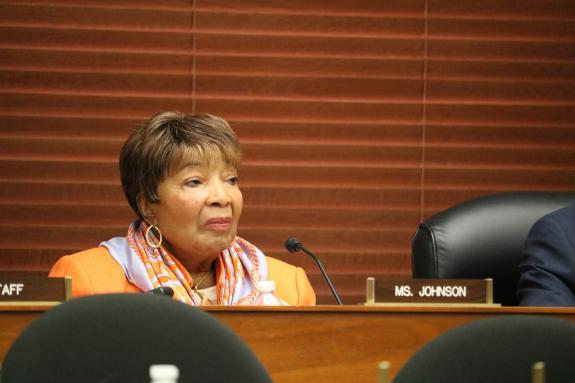

Last week, U.S. Rep. Lamar Smith, chair of the House Committee on Science, Space and Technology, held a hearing to investigate whether the Committee has the authority to investigate state attorneys general and NGOs.
State attorneys general, including those of New York and Massachusetts, along with environmental NGOs including Greenpeace and the Union for Concerned Scientists, are investigating ExxonMobil and other energy companies about their research on climate change and whether hiding findings resulted in shareholder and consumer fraud.
Smith’s subpoenas, which demanded documents and emails from NGOs and state attorneys, were met with a mix of silence and incredulity. Smith in turn refused to meet with any of the attorneys general or environmental groups, and scheduled Wednesday’s hearings in order to assert the Committee’s right to issue such broad subpoenas.
Smith and his allies claim such an investigation is needed to protect the First Amendment rights of companies, such as ExxonMobil, which he claims are unfairly targeted by rogue attorneys and special interest groups. Opponents say Smith is grandstanding and engaging in a 21st-century version of the Red Scare.
And few are immune to what Lawrence M. Krauss, a scientist based at Arizona State University, describes as Smith’s “anti-science rampage.” When the National Oceanic and Atmospheric Administration (NOAA) authored a paper that denied any “pause” in climate change, its director, Kathryn Sullivan, a former U.S. Navy Captain and astronaut, received one of Smith’s first subpoenas. And therein lies Smith’s ongoing climate science witch hunt, fueled in part by donations from the oil and gas industry.
The Science Committee’s ranking member, Eddie Bernice Johnson, a Democrat from Texas, called Smith out for what she says is overreach. “This hearing appears to be the culmination of a politically motivated ‘oversight’ agenda that has been applauded by oil, gas, and mining interests,” Johnson said in a public statement. “[It is] broadly condemned by the public, the media and the independent scientific community across the country and around the world.”
Johnson claimed that in the 58-year history of the Science Committee, it used its oversight authority to identify technical and scientific problems and work in a bipartisan fashion to find solutions. She also accused Smith of using the Science Committee as a political tool, while treating scientists such as Sullivan with contempt. Furthermore, Johnson blasted Smith as a tool of special interests -- incidents range from using subpoenas to demand health records in order to disprove that air pollution is bad for public health, to demanding documents from the EPA to assist a foreign mining company as it sued the U.S. government over environmental regulations.
In any event, Johnson asserts that the First Amendment rights of ExxonMobil, or any company, are not protected when it comes to fraud. “The law is clear – fraud is not protected by the First Amendment,” Johnson said. “If any companies in the oil industry defrauded the public or their shareholders in their well-documented disinformation campaign on global warming, then that is a matter for the state AGs and the courts, not the Committee on Science.”
Professor Charles Tiefer of the University of Baltimore also pointed out that neither the Senate nor the House has ever subpoenaed a state attorney general in the 227-year history of Congress. Tiefer noted that investigations under state law by attorneys general fall under police powers reserved to the states without any federal interference.
Other expert witnesses called to testify, in the words of writer Scott K. Johnson, were invited by Smith "to tell him what he's doing is just fine." They gave Smith what he wanted by saying the New York attorney general was in on a corrupt deal with George Soros and environmental groups. Writing for The Hill, former Congressman Brad Miller of North Carolina described the hearing as "sticking its nose where it doesn't belong."
Do not expect this sideshow to end any time soon, especially in a presidential election year. House Republicans have long cried foul over President Barack Obama’s policies on climate change, public lands and oceans. And despite a two-year slump in energy prices, companies such as ExxonMobil still have the heft in their checkbooks to buy plenty of friends in Congress.
Image credit: House Science Committee